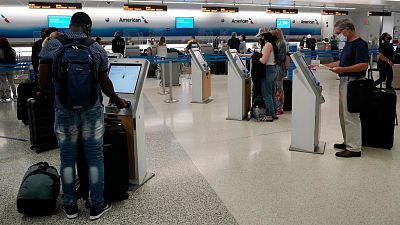US authorities are still discouraging travel to Europe despite entry rules easing

As the EU starts to lift travel restrictions, US authorities are still advising people not to travel to Europe.
All European Union and European Economic Area (EU/EEA) countries are still considered to be Level 4: COVID-19 Very High – the highest advisory level in the US. The Centre for Disease Control (CDC) says citizens should avoid travelling to these destinations.
Many EU countries have been on the list for months including popular destinations for international tourists like Portugal, Spain, Italy and France. Elsewhere in Europe, the UK has been classified as Level 4 since July last year.
In the meantime, a number of EU and EEA countries are now allowing restriction-free travel. Denmark, Czech Republic, Ireland, Latvia, Norway, Poland, Romania, Slovenia and Sweden are all open to international tourists.
Where a destination is placed on the CDC’s scale of risk is based primarily on the number of COVID-19 cases it has. When a country has more than 500 cases per 100,000 people registered in the last 28 days, it is designated as Level 4.
In the EU/EEA, the most recent weekly average for member states was 1,778 cases per 100,000 people.
Many US travellers are ignoring CDC advice however, and taking breaks in the EU despite its Level 4 status. Data from the Greek Tourism Confederation, for example, shows that flight bookings from the US to Greece have now returned to pre-pandemic levels.
And, according to the European Travel Commission, 45 per cent of Americans surveyed said they wanted to visit the EU in 2022. Some of the main reasons they said would influence their decision to travel to the bloc were vaccination rates and the way a country had handled the COVID-19 situation.
What are the entry rules for Europeans visiting the US?
When it comes to visiting the US from Europe, there has also been a push for the CDC to drop testing requirements for incoming international travellers.
It is one of the few remaining major holiday destinations to still require vaccinated visitors to provide proof of a negative Covid test taken within 24 hours of departure. This can either be a rapid antigen test or a PCR test.
Industry lobbying group Airlines for America said in a letter to the government that “much has changed since these measures were imposed and they no longer make sense in the current public health context.” Most major US carriers are members of this group.
Despite calls from airlines, US politicians and industry experts to ease restrictions, last week White House Coronavirus Response Coordinator Jeff Zients said there were “no plans to change the international travel requirements at this point.”
